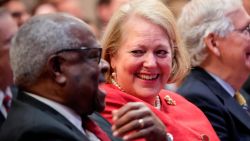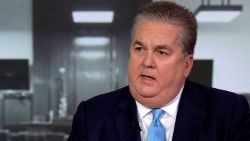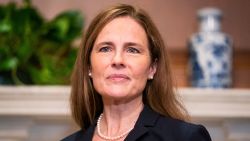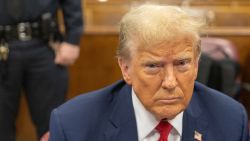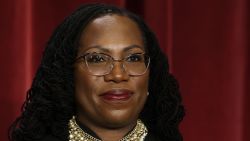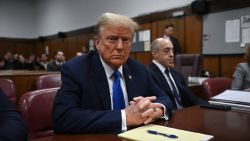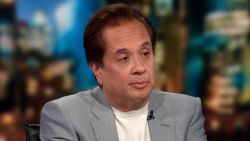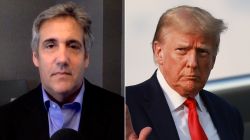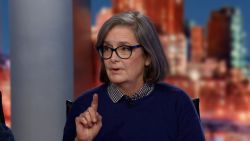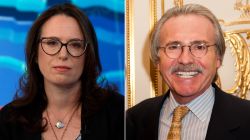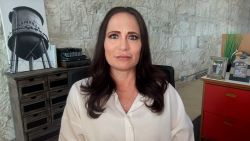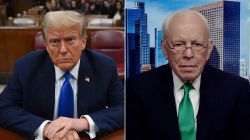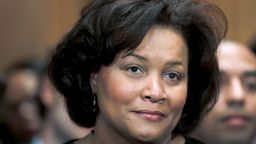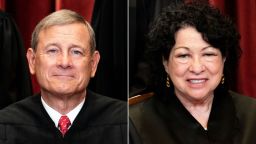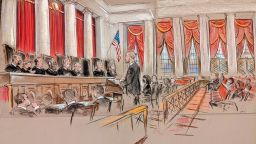Recent revelations about the political activism Virginia “Ginni” Thomas, wife of Justice Clarence Thomas, have renewed scrutiny about how the Supreme Court approaches questions of potential conflicts of interest with the cases that the justices are reviewing.
Supreme Court justices make their own determination as to whether they have a personal or financial conflict that would require them to recuse from a case before them.
Thomas’ refusal to recuse in various cases linked to causes for which his wife has advocated has prompted criticism from court ethical experts and his critics on the left. His defenders, however, argue that Ginni Thomas, who runs a political consulting firm, has a right to political speech and that none of her conduct amounts to the types of ethical issues that would require recusal. Ginni Thomas’ views about the House January 6 committee – and her connections to some of the figures being examined by that probe and by the Justice Department – has kicked up another round of consternation, as has a scathing look at her work’s connection to the cases before the Supreme Court published by The New Yorker last month.
But for years, she has shown few qualms about how her public outspokenness and political ties, which critics say is undermining the public’s trust in the institution. Justice Thomas, who declined a CNN request for an interview, has credited his wife for supporting his career on the bench, even as he has seemed to distance himself from her alignment with Republican causes.
“As a judge, you don’t get to be on one team or the other,” he said in a 2018 interview he did with her for the conservative outlet, The Daily Caller. “You have to think independently in order to live up to the oath that you take.”
Ginni Thomas, through an associate, declined to comment for this story.
The debate over her activism is playing out amid a larger push for more transparency and ethical standards at the Supreme Court. While all courts seek to avoid the appearance of bias, the Supreme Court is exempt from more formal protocols that are used in lower courts.
RELATED: The 3 Supreme Court justices to watch after Breyer retires
“There’s no enforcement mechanism or procedure” for Supreme Court recusal decisions, said American University Washington College of Law professor Amanda Frost, even though the justices are covered by the same recusal statute that applies to lower courts.
“The common practice is for each and every justice to decide on their own whether to recuse – even if asked,” Frost, who has studied judicial ethics, told CNN. “So, there’s no review by any other justice or any other judicial body – and that I think is problematic – and then there’s no transparency.”
When cases are before lower courts, parties have the option to request that judge recuse because of a potential conflict, Frost said, and a district court judge’s decision not to recuse can be appealed to an appeals court.
That process is difficult, Frost said, but “there is a method of getting review of it and there’s no method for reviewing the justices.”
Ginni Thomas – who married Clarence in 1987, when Clarence led the Equal Employment Opportunity Commission – has long been involved in a host of conservative causes. The type of work she’s done on each issue, and how closely it is linked to cases before the Supreme Court, vary across the specific subjects. But the justice’s wife’s activism has no parallels in the Supreme Court’s history, court ethics experts told CNN, so there is no clear tradition to measure his recusal approach against.
Whereas other justices’ spouses have pivoted their careers towards lower-profile roles once their partners took the bench, Thomas remained on the frontline of various political fights, including some of the most contentious battles of the Trump-era. She spoke directly to then-President Donald Trump, for instance, according to a report in The New York Times, at a White House meeting where she spoke out about the aides that the administration was hiring.
“No spouse, to my knowledge, has ever actively lobbied other branches of government in the public sphere on issues before the justices like Ginni Thomas has,” said Gabe Roth, executive director of Fix the Court, an organization that pushes for transparency reforms across the federal judiciary.
The fallout from the January 6 US Capitol insurrection has escalated concerns about how her political activism was complicating perceptions of Supreme Court impartiality. Social media posts obtained by Slate show her cheering on the rally that preceded the Capitol attack, though she later made clear, according to Slate, that she had published the posts before the rally turned violent.
Since the riot, however, she criticized the January 6 committee in a letter she signed to House Minority Leader Kevin McCarthy calling for the ouster of the two GOP committee members from the Republican House conference.
The letter, where she was joined by several conservatives, said that the committee “improperly issued subpoenas and other investigatory tactics designed not to pursue any valid legislative end, but merely to exploit for the sake of political harassment and demagoguery.”
The high court examined questions about the legitimacy of the House’s investigation into the Capitol attack, in a case brought by Trump seeking to block the release of his White House records to the House Select Committee investigating January 6. The Supreme Court allowed for the disclosure of the documents, in an unsigned order that only Thomas publicly dissented from.
Even if there’s no evidence that Thomas’ vote in the Trump documents case was influenced by his wife, her views about and connections to the January 6 investigations could set off “alarm bells” for people who already skeptically view the court as a partisan and political institution, according to Steve Vladeck, a CNN Supreme Court analyst and professor at the University of Texas School of Law
Those alarm bells, he said, “could be easily dispelled with more transparency, with more clarity from the justices, with more recognition on their part of the need to be very public about what their standards are, how they enforce them, and in close cases, why they are not recusing.”
That language of the recusal statute, Frost said, covers “anything that would lead to an appearance of partiality, an appearance that … they’d be biased.”
“Even if, in reality they don’t think it would be, appearance alone would disqualify,” Frost said.
‘It would help if there were rules, and if those rules were clear’
The procedures are murky at best for how a justice should approach situations where a personal or financial connection to a case could require his or her disqualification.
Federal statute instructs justices to recuse themselves in situations where their “impartiality might reasonably be questioned.” However, justices are not required to explain publicly what prompted the disqualification.
That has left court observers guessing what led to the recusals and how justices are weighing those decisions. Justices step away from cases where they were involved – perhaps as lawyers or lower court judges – in earlier stages of the litigation, which is a category of required recusals spelled out by federal law. The statute also has recusal rules addressing circumstances of a “financial interest,” which appear to have prompted recusals in cases where a justice holds stock in a company that’s party to a case.
Other types of potential conflicts, where the conduct is less clear-cut, have occasionally prompted recusals, though without public explanations, it’s impossible to know for sure. For instance, Justice Brett Kavanaugh did not participate in a review of a case involving accusations that Johnson and Johnson baby powder contained ingredients that caused cancer. Though he didn’t say why publicly, it’s presumed that he recused because his father had worked as a lobbyist for the cosmetic industry.
In a very few instances, justices have issued statements explaining why they weren’t recusing from a case, which is what the late Justice Antonin Scalia did when he rejected calls to sit out a case involving former Vice President Dick Cheney after a duck hunting trip they took together. Scalia, in a statement at the time, said that “If it is reasonable to think that a Supreme Court Justice can be bought so cheap, the Nation is in deeper trouble than I had imagined.”
Lower court judges assemble lists of people and entities to which they have personal connections that could amount to conflicts. Those lists are then used by the court software that assigns incoming cases so that cases involving those parties can be directed to judges without connections to them.
But the Supreme Court – with only nine justices available to weigh in on some of the most contentious and important legal issues in the country – is not necessarily geared to operate that way.
“If you’re a lower court judge, you should have a broader recusal list, theoretically because you’re more fungible at that level, you can be replaced,” Roth said.
When Justice Amy Coney Barrett was an appellate court judge, Shell Oil was on her conflict list, an inclusion assumed to be because her father worked for the company for nearly three decades. However she did not recuse herself from a climate change case before the Supreme Court last year brought against Shell and several other companies.
“In her mind, presumably, she looked at the details of the case and said, ‘Well, my dad had nothing to do with this,’” Roth said.
The court’s public information office did not respond to CNN’s inquiries seeking explanation for Kavanaugh’s and Barrett’s respective decisions to recuse and not recuse from those cases.
Vladeck pointed to the risk of “recusal shopping” – in which parties could try to exploit certain recusal rules to force the disqualification of justices who might rule against them – as a reason that the Supreme Court should not necessarily follow the same rules as lower courts.
“I do think that what this [Ginni Thomas] episode underscores is that it would help if there were rules, and if those rules were clear, and if the justices did a better job of articulating exactly when they will and will not step back from a case,” Vladeck said.
In a recent letter to the Supreme Court, Roth’s group called for the court to adopt a policy of not accepting amicus briefs submitted by “someone with ties to the justice that, by virtue of its being filed, would make a reasonable person question a justice’s impartiality in a case or petition,” a reference to the federal statute regarding recusals.
A group of legal ethics scholars, meanwhile, wrote to Chief Justice John Roberts Thursday asking him to issue a written code of ethics that would help “current and future members of the Court to transparently address potential conflicts and other issues in a way that builds public trust in the institution.”
Court records from Justice Thomas’ time on the bench through 2020 show 32 matters in which he indicated he was not participating, according to a review from of the records by Roth.
‘They are different people. They do different things’
For a justice to have a spouse with a high-profile profession in politics is itself a somewhat modern development, given that women only fully entered the workforce in the last half-century and the court did not get its first female justice until 1981.
“In the modern era, the spouse should not have to subjugate themselves to their powerful husband or wife,” said Jennifer Stefano, a conservative activist who has partnered with Thomas in her work on various political issues. “I mean, you still have a First Amendment right.”
Ginni Thomas has been linked to groups that have filed what’s known as “amicus” or “friend of the court” briefs, where groups and individuals not directly involved in a case give the court their views of the legal issues before the justices. One such individual is Frank Gaffney, an immigration hardliner who signed a 2017 amicus brief supporting the Trump administration travels restrictions on some majority Muslim countries. As first reported last month by the New Yorker, tax documents for that year and the year after show an organization led by Gaffney, the Center for Security Policy, paying thousands in contractor fees to a consulting firm run by Ginni Thomas. Gaffney wrote in an email to CNN that Ginni Thomas was “not involved in any way” with the amicus brief filed in that case.
Another group she has been tied to is the National Association of Scholars, which has filed amicus briefs with the Supreme Court supporting parties who are challenging the affirmative action programs at Harvard and North Carolina University – a case the court will hear later this year. Ginni Thomas serves on the Association’s advisory board.
Its president, Peter Wood told CNN that Thomas has advised him on some matters, but that he has no relationship with her husband. According to Wood, she provided no input on the affirmative action briefs filed with the Supreme Court.
“As far as I know she doesn’t even know that we filed such briefs. I don’t talk about those sorts of issues with her,” he told CNN, adding that he saw no reason for Justice Thomas to recuse from the cases because of the group’s connection to his wife.
“I assume the public is capable of informing itself of the difference between a husband and wife,” Wood said. “They are different people. They do different things.”
It could be the case that additional recusal protocols would not disqualify Thomas from the proceedings reviewing policies about which his wife has advocated.
“I would be careful to craft a rule that didn’t make it impossible to have… two working people married to each other and have one of them be a judge,” Frost said, while acknowledging the Ginni situation is “unique.”
But Frost and other legal experts said that making the procedures less opaque would help build trust among the court skeptics doubtful of Thomas’ and other justices’ refusal to recuse in certain cases.
“The Supreme Court has really fallen down on the task,” Frost said. “They’ve gotten very used to not being transparent on many different issues on many different fronts.”



